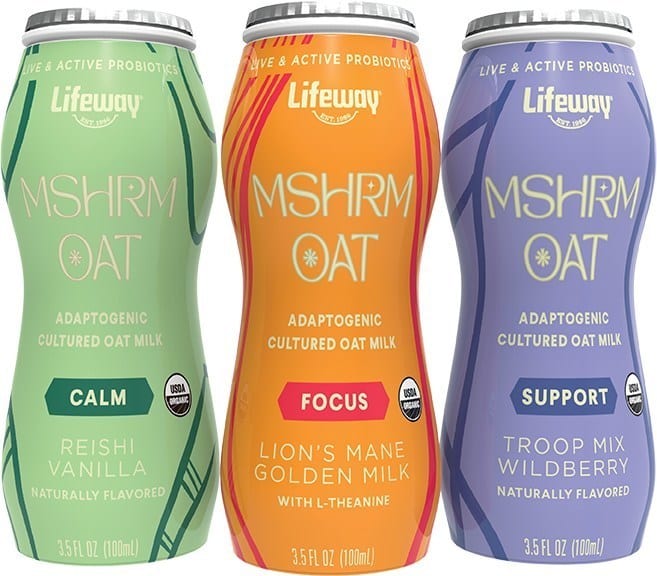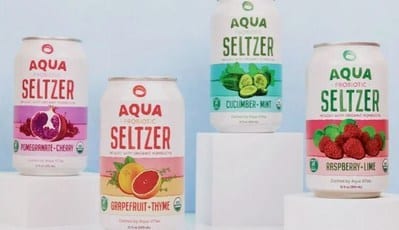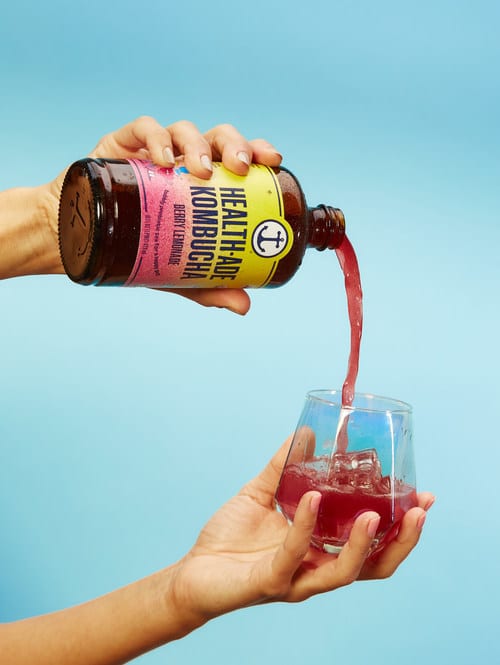Beverage
R&D
The art of a good digestion
By Lauren Sabetta
Fiber, probiotics’ link to digestive health drive developers to biotic solutions
(Image courtesy of Ingredion Inc.)
Known for having influenced the progress of the Enlightenment throughout Europe, Genevan philosopher, writer and composer Jean-Jacques Rousseau is quoted as having said: “Happiness is a good bank account, a good cook, and a good digestion.” Today, as the growing interest in digestive health stems from consumers’ more proactive approach to health and wellness, experts note that, perhaps now more than ever before, consumers recognize how their food and beverage choices can help them maintain good health.
Consumers are gaining a greater understanding of the role digestive health and the gut microbiome have on overall well-being, whether for immune function or cognitive health, says Justin Green, director of scientific affairs for Minneapolis-based Cargill’s health technologies business.
“Research from HealthFocus International suggests six in 10 consumers now consider digestive health vital to overall physical health,” he says. “This heightened awareness likely explains why two-thirds of shoppers who seek out functional beverages say they’re concerned about digestive health.
“Consumers have hectic lifestyles,” he continues. “Beverages such as juices, sports and energy drinks, dairy beverages and teas, are all excellent vehicles for functional ingredients that support digestive and other health benefits in a convenient and delicious way.”

Each Lifeway Oat product, made with 100% whole grain oats, contains beta-glucans plus 10 live and active probiotic cultures to help promote a balanced and diverse microbiome, the company says. (Image courtesy of Lifeway Foods Inc.)
Micah Greenhill, beverage marketing director for ADM, Chicago, adds that, as today’s consumers are proactively looking for ways to support their overall well-being, the ongoing pandemic has propelled the digestive health trend forward.
“[S]ixty-one percent of global consumers are more conscious of the need to live a healthy lifestyle due to COVID-19,” Greenhill says. “These health-conscious consumers are seeking solutions that can help meet their wellness goals, and they’re increasingly perceiving a connection between their gut microbiomes, digestive health and holistic well-being.
“In fact, 58% of global consumers perceive a connection between the function of the bacteria in the gut to wider aspects of well-being,” he continues. “With that, consumers increasingly perceive biotic ingredients, including prebiotic fiber, probiotics and postbiotics to have associations with supporting gut bacteria, driving forward the demand for more digestive supporting ingredients in their food and beverage purchases.”
Fiber, probiotics continue on upward trend
As more consumers seek out beverages that align with their health and wellness goals, they are finding increased opportunity to choose personalized products that meet their individual needs, notes Carolyn Phillips, senior manager of insights for Americas at Ingredion Inc., Westchester, Ill.
“Brands that do not offer the specific benefits sought by their consumer audience may get left on the shelf,” she says. “According to Innova’s 2021 Tailored to Fit report, 64% of global consumers say they are finding more products tailored to their needs relating to nutrition, activity level, health goals or taste preference customizations.”
Moreover, with the greater focus on health and self-care, more consumers are leaning toward food as medicine and seeking out foods that support gut health and immunity, while continuing to avoid negatively perceived ingredients, Phillips notes.
Further, with the growing knowledge of the link between a healthy gut and optimal immune response, consumers are seeking out products that provide both benefits in one, notes Leanne Levy, director of sales and marketing at ADM/Deerland Probiotics & Enzymes, Kennesaw, Ga.
“Brands that do not offer the specific benefits sought by their consumer audience may get left on the shelf. According to Innova’s 2021 Tailored to Fit report, 64% of global consumers say they are finding more products tailored to their needs relating to nutrition, activity level, health goals, or taste preference customizations.”
— Carolyn Phillips, senior manager of insights for Americas at Ingredion Inc.
“We see this as a long-term opportunity for beverage marketers,” Levy says. “Enduring the arduous two years of the pandemic has altered the consumer health mindset to one that is more preventive. A closely intertwined trend is the explosion of probiotics and the concurrent consumer demand for them.”
As more consumers are linking fiber, pre- and probiotics to a wide range of benefits, product developers also are seeking biotic solutions that support consumers’ wellness desires.
“Since fiber is the No. 1 ingredient consumers want to add to their diets for reasons like digestion, weight management and satiety, we find that product developers are also increasingly requesting fiber solutions that can easily be added into beverage solutions to meet this need,” ADM’s Greenhill explains. “To meet consumer demand for added fiber while reducing the potential for high or increased gastrointestinal discomfort, ADM/Matsutani LLC have created Fibersol, a line of soluble prebiotic dietary fiber ingredients.”
Fiber, as it relates to digestive health, generally has increased in the beverages space, says Grace Kim, principal scientist at London-based Tate & Lyle.
“Fiber’s link to digestive health, along with the importance of digestive health in overall immunity, have been the main drivers for interest in our products,” Kim says. “Developers who seek out ingredients that may provide digestive health benefits reach out looking for a fiber that functions as a prebiotic and can withstand common stability hurdles attributed to beverages. In our case, we receive the most questions around our PROMITOR Soluble Corn Fiber.”
Crafted with naturally occurring probiotics, Aqua ViTea blends ancient kombucha fermentation traditions with modern brewing techniques to produce beverages that are rich with clean ingredients, the company says. (Image courtesy of Aqua ViTea)

Because soluble fiber easily disperses into liquid without losing any beneficial attributes, it is the most utilized ingredient by product developers in the beverage space, notes Diana Nieto Velez, Ingredion’s senior manager for business development.
“Most of the ingredients we recommend for beverages include fructo-oligosaccharides such as NUTRAFLORA P95 soluble prebiotic fiber and TIC PRETESTED inulin,” Velez says. “Other ingredients include the soluble corn and wheat fibers available in the market. Ingredion is also starting to fulfill requests on gum acacia due to the newly approved status by the FDA.”
Ingredient challenges
Among the formulation challenges that can occur when using fiber and prebiotic fiber within beverages relate to solubility, flavor and stability, experts note.
Performance in the process can affect total dietary fiber retention, Velez notes. “For example, if the pH of the beverage is too low, the ingredient might start to lose some fiber content over time and some of the key sensory characteristics such as flavor and colors,” she explains.
Probiotics inherently are less stable than the metabolites in postbiotics, because they must remain alive ― from processing and packaging until they reach the consumer’s gut, Cargill’s Green explains. “As a result, it is much more challenging to ensure they survive and ultimately start producing health-benefiting components,” he says.
Tate & Lyles’ Kim adds that one challenge is in creating an environment where the probiotics can survive and where prebiotics fail to break down.
“As for probiotics, most beverage matrices were designed to keep them safe from bacteria. The odds are against all bacteria including the good guys,” Kim says. “More acid and heat tolerant fibers like PROMITOR help in creating this balance.”
As lactobacillus and bifidobacteria strains are sensitive to environmental conditions and can thus degrade or “die” during processing, Deerland’s Levy suggests formulators look into spore forming strains of probiotics.

Health-Ade announced a classic new flavor to its national offerings: Berry Lemonade Health-Ade Kombucha. By adding new, approachable flavors, Health-Ade hopes to make probiotic foods and gut health education accessible to more people, it says. (Image courtesy of Health-Ade)
“The solution is to use spore forming strain of probiotics.” Levy says. “Deerland provides two: Bacillus subtilis DE111 and MuniSpore Bacillus clausii CS109. These organisms form endospores that are protective shells, preserving their active essence. They are able to withstand high heat and other processing activities, as well as the acidic environment in the stomach, so that they arrive intact to their destination.”
Another formulation hurdle product developers must consider is maintaining optimal flavor and texture, Greenhill notes.
“At ADM, we couple our biotic solutions with our wide range of high-quality botanical extracts, standardized plant extracts, and high-fruit and vegetable content powders to elevate beverages and provide an appealing sensory experience,” he says. “For example, including botanicals like carob, which is naturally sweet, can build an intriguing flavor. Moreover, we leverage our vast flavor and color portfolio derived from natural sources for delicious, eye-catching functional beverage options that will entice consumers to come back for more.”
More beverage categories adopt biotic solutions
As certain beverage categories are particularly well-positioned for additional incorporation of prebiotic fiber, probiotics and postbiotics, beverage categories such as sparkling water, tonic water, fruit drinks and energy drinks are driving growth and gaining adoption.
As dairy, yogurt drinks, kombuchas and some teas already have a consumer perceived health-halo, the addition of fiber and probiotics is a welcome and expected inclusion in these beverage categories, experts note.
“Interestingly, we also find that the sports nutrition category is growing beyond the traditional pre- and post-workout drink or snack,” ADM’s Greenhill says. “Consumers are now turning to sports and active nutrition options beyond athletic occasions.
“Moreover, functional and carbonated waters with prebiotic fiber and probiotics are also popping up in the marketplace, particularly as consumers look for exciting sensory experiences that also may help support their wellness goals,” he continues. “These categories are ripe for growth, and the inclusion of fiber and probiotics will help functional beverages expand to offer more areas of support to consumers on their individual wellness journeys.”
As the focus on health continues, beverage options that contain fiber are an easy way in which beverage brands can formulate to help meet the needs tied to consumers’ interest, says Janae Kuc, Ingredion’s senior marketing manager.
“According to new product launch data from Innova, the top beverage categories utilizing probiotics are soft drinks, dairy and sports nutrition,” she says.” If we drill into the sub-categories, the top players are drinking yogurt/fermented beverages, iced tea/kombucha, carbonates, sports powders and juices.
“Again, the focus on health and wellness and holistic consumption drive interest in this area,” Kuc continues. “Consumer acceptance of maintaining a healthy gut and immune system plays a prominent role in this space.”
New, exciting solutions
As consumer interest for products containing digestive health ingredients continues to grow across beverage categories, experts note that ingredient solutions available to beverage-makers continues to improve.
“An exciting new area of research involves the combination of prebiotic fibers and probiotics,” says David Nichols, senior manager at Tate & Lyle. “This could become more widespread, both as separate ingredients used together or individual ingredients, which contain both. In some cases, these may be promoted as symbiotic, although proving a truly symbiotic effect typically requires a clinical research study (or studies) since regulations vary by country.”
Cargill’s Green notes that, while it is widely recognized that a healthy microbiome supports both gut integrity and the immune system, it also is becoming clear that postbiotics can support the gut microbiome and immune health.
“While pre- and probiotics may be better known, it’s postbiotics that deliver the final goods,” Green says. “They are produced through fermentation outside the body, under highly controlled conditions, and include amino acids, vitamins, short chain fatty acids and more.
“Our ingredient, EpiCor postbiotic, is made using baker’s yeast (saccharomyces cerevisiae) that goes through a natural fermentation process, which creates a unique fingerprint of metabolites,” he continues. “Over a dozen published studies, including multiple human clinical trials, show that EpiCor postbiotic supports the gut microbiome, as well as immune health and nasal comfort.”
As formulation advantages make it possible to deliver health benefits across a range of functional beverage applications, it also is a big advantage for consumers, Green says.
“It seems clear that interest and demand for functional beverages that support digestive health will continue to increase ― we believe consumers will be looking for products backed by scientific research,” he concludes. BI

